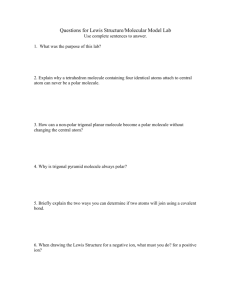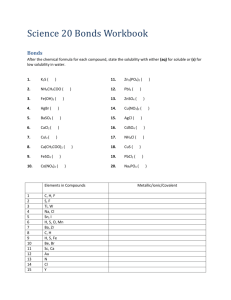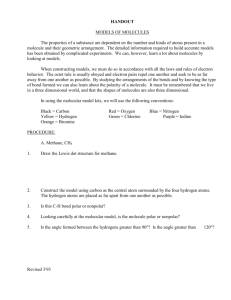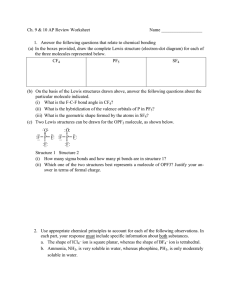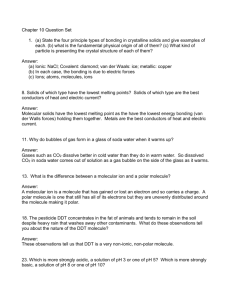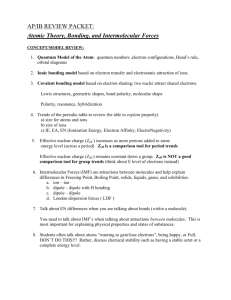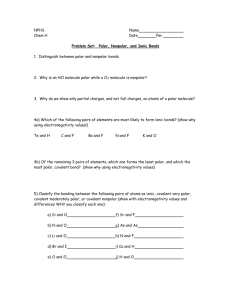PROBLEM SET: BONDING AND MOLECULAR STRUCTURE
advertisement
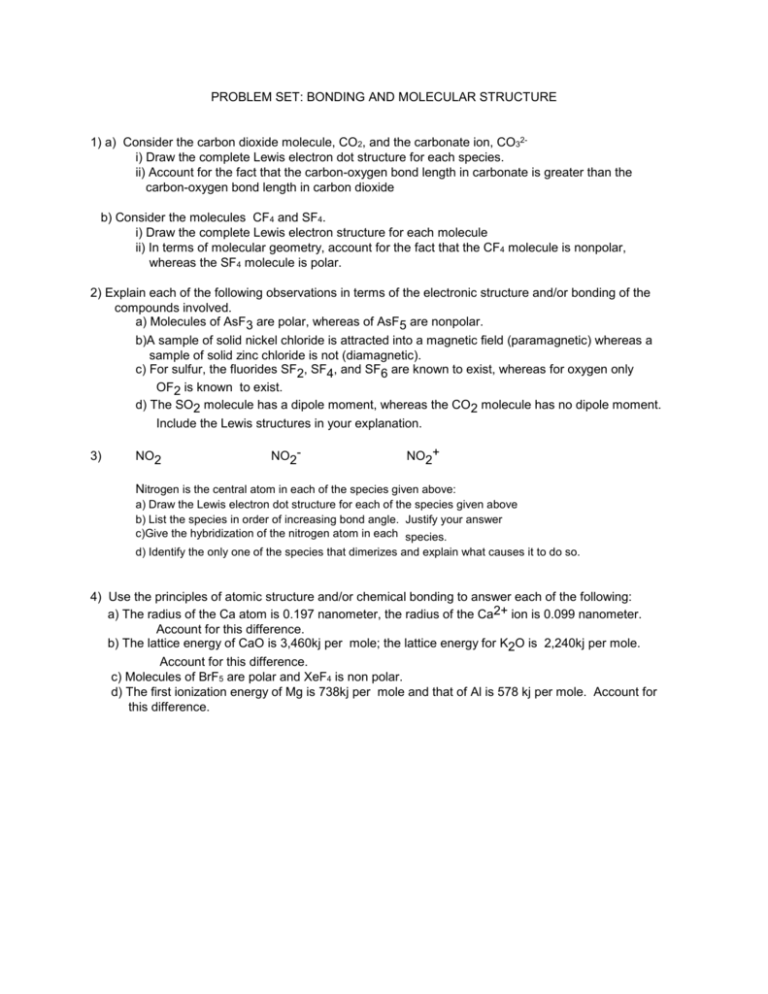
PROBLEM SET: BONDING AND MOLECULAR STRUCTURE 1) a) Consider the carbon dioxide molecule, CO2, and the carbonate ion, CO32i) Draw the complete Lewis electron dot structure for each species. ii) Account for the fact that the carbon-oxygen bond length in carbonate is greater than the carbon-oxygen bond length in carbon dioxide b) Consider the molecules CF4 and SF4. i) Draw the complete Lewis electron structure for each molecule ii) In terms of molecular geometry, account for the fact that the CF4 molecule is nonpolar, whereas the SF4 molecule is polar. 2) Explain each of the following observations in terms of the electronic structure and/or bonding of the compounds involved. a) Molecules of AsF3 are polar, whereas of AsF5 are nonpolar. b)A sample of solid nickel chloride is attracted into a magnetic field (paramagnetic) whereas a sample of solid zinc chloride is not (diamagnetic). c) For sulfur, the fluorides SF2, SF4, and SF6 are known to exist, whereas for oxygen only OF2 is known to exist. d) The SO2 molecule has a dipole moment, whereas the CO2 molecule has no dipole moment. Include the Lewis structures in your explanation. 3) NO2 NO2- NO2+ Nitrogen is the central atom in each of the species given above: a) Draw the Lewis electron dot structure for each of the species given above b) List the species in order of increasing bond angle. Justify your answer c)Give the hybridization of the nitrogen atom in each species. d) Identify the only one of the species that dimerizes and explain what causes it to do so. 4) Use the principles of atomic structure and/or chemical bonding to answer each of the following: a) The radius of the Ca atom is 0.197 nanometer, the radius of the Ca2+ ion is 0.099 nanometer. Account for this difference. b) The lattice energy of CaO is 3,460kj per mole; the lattice energy for K2O is 2,240kj per mole. Account for this difference. c) Molecules of BrF5 are polar and XeF4 is non polar. d) The first ionization energy of Mg is 738kj per mole and that of Al is 578 kj per mole. Account for this difference.

